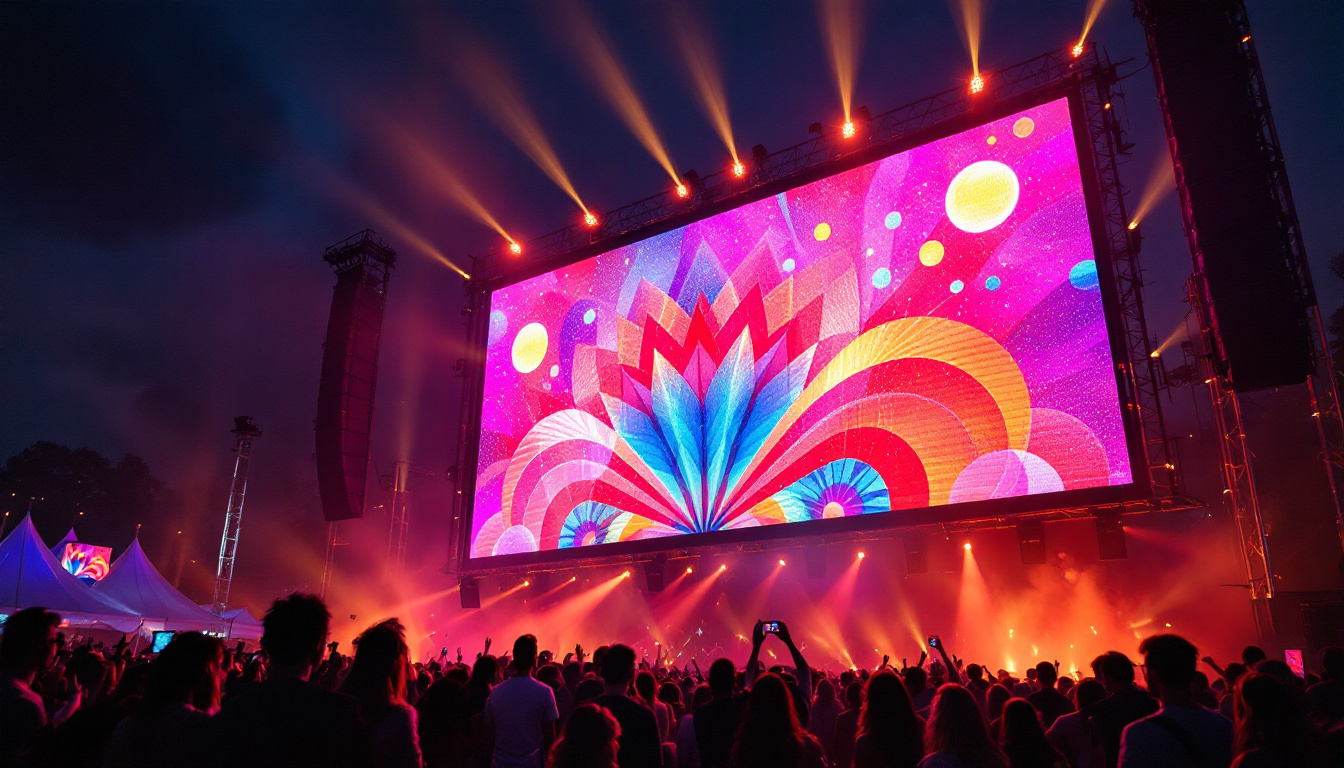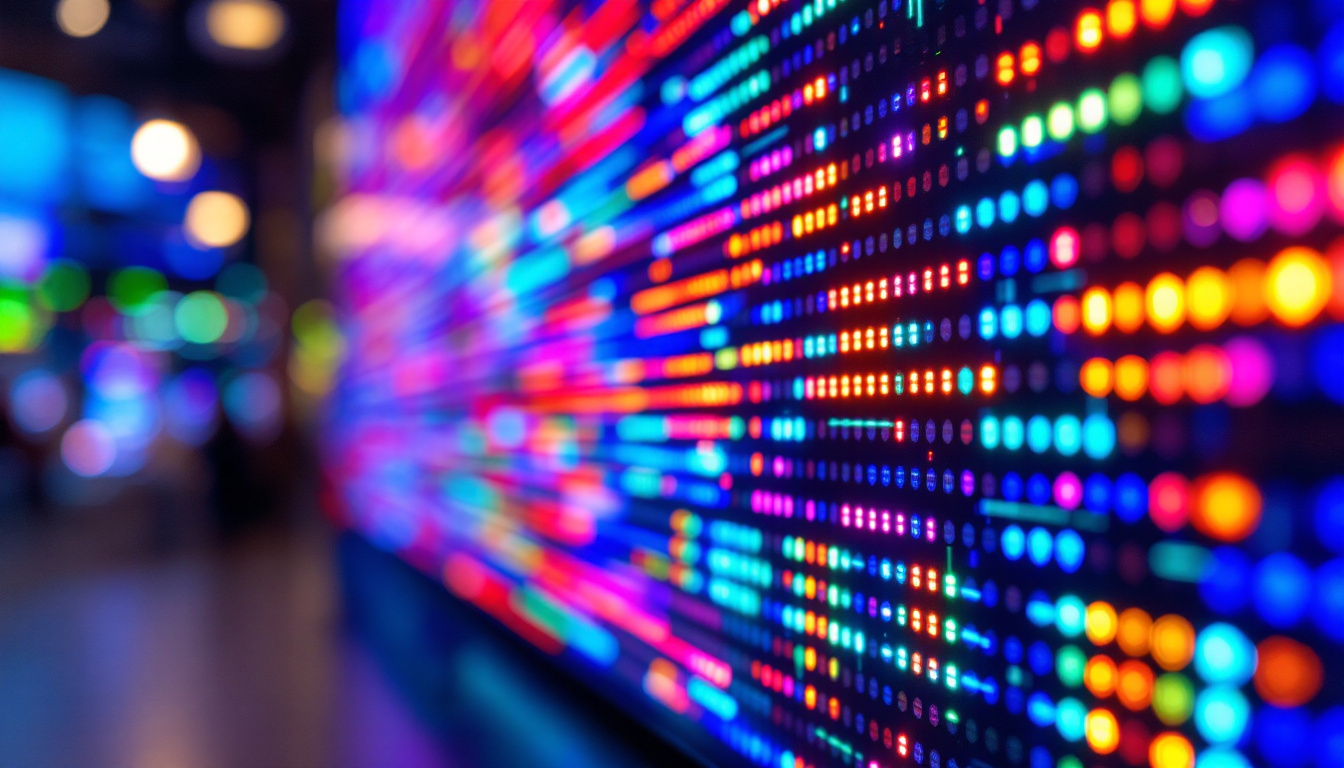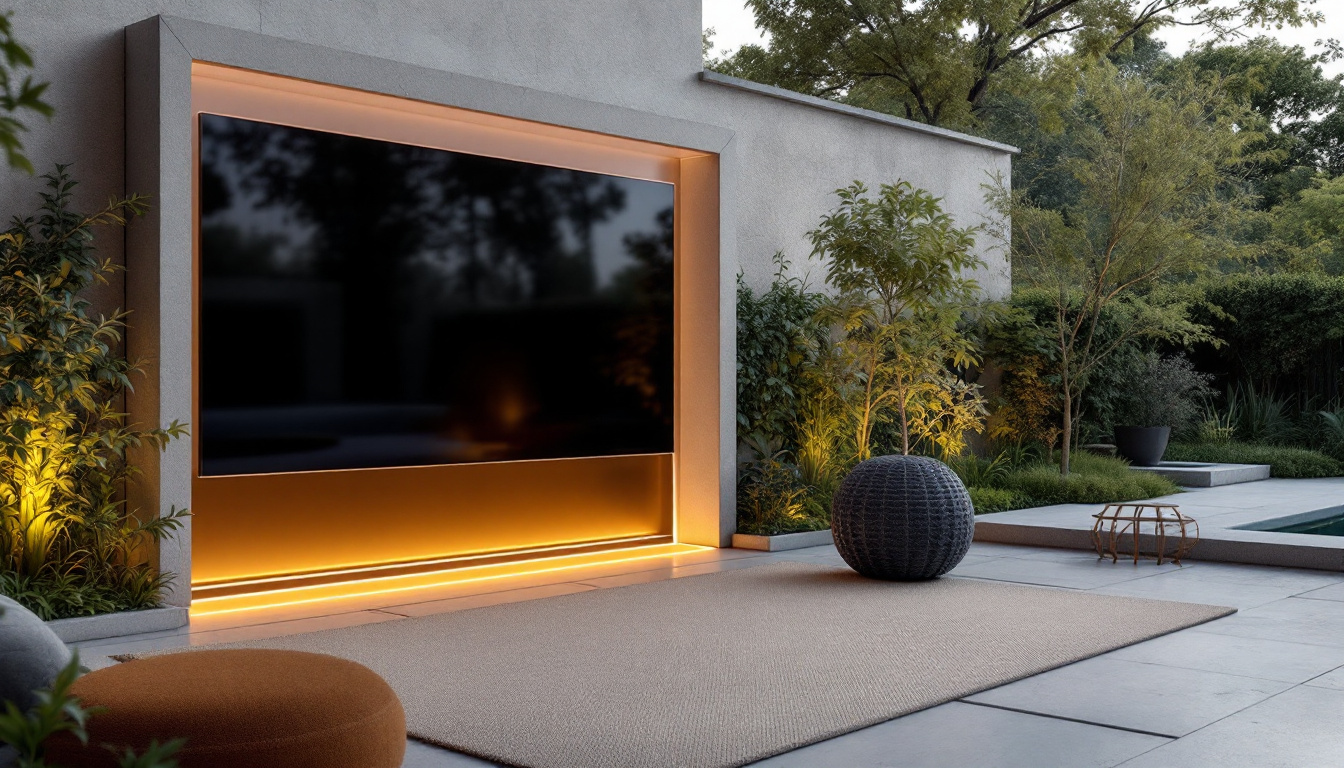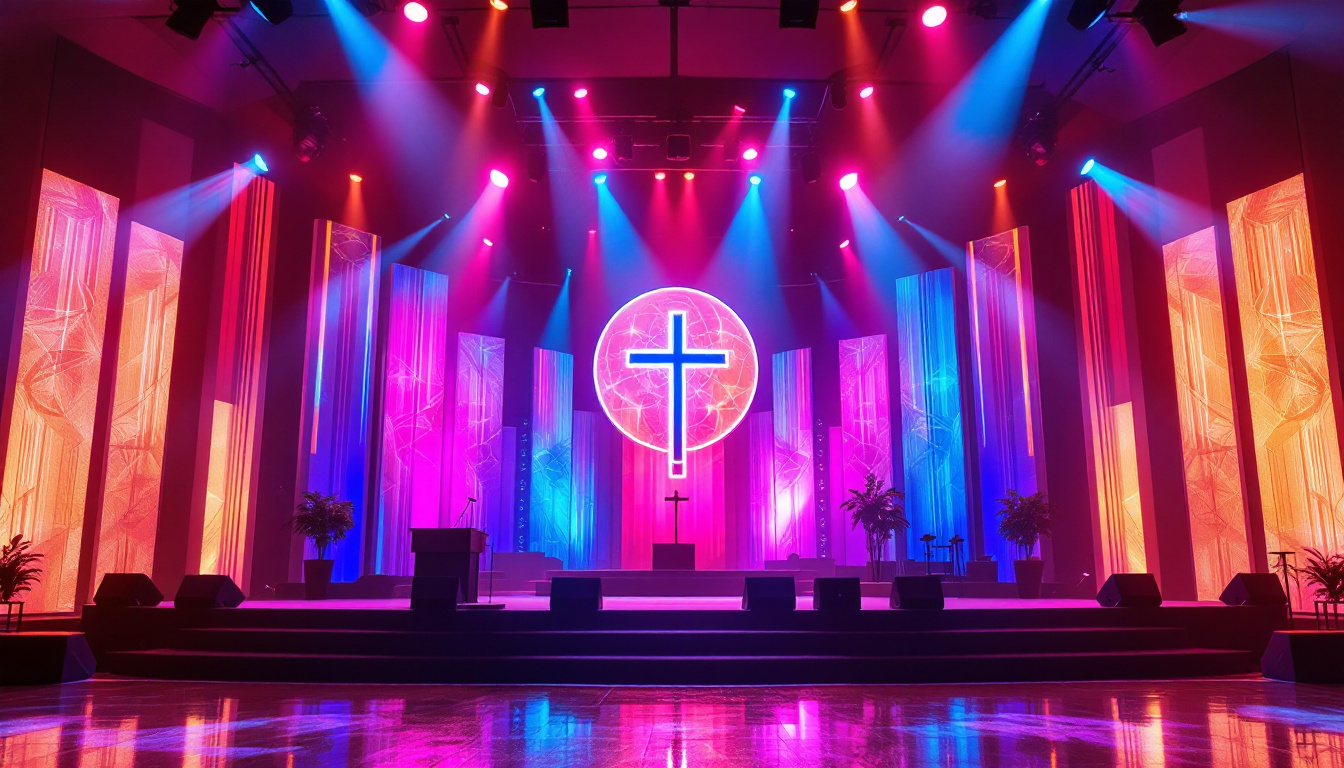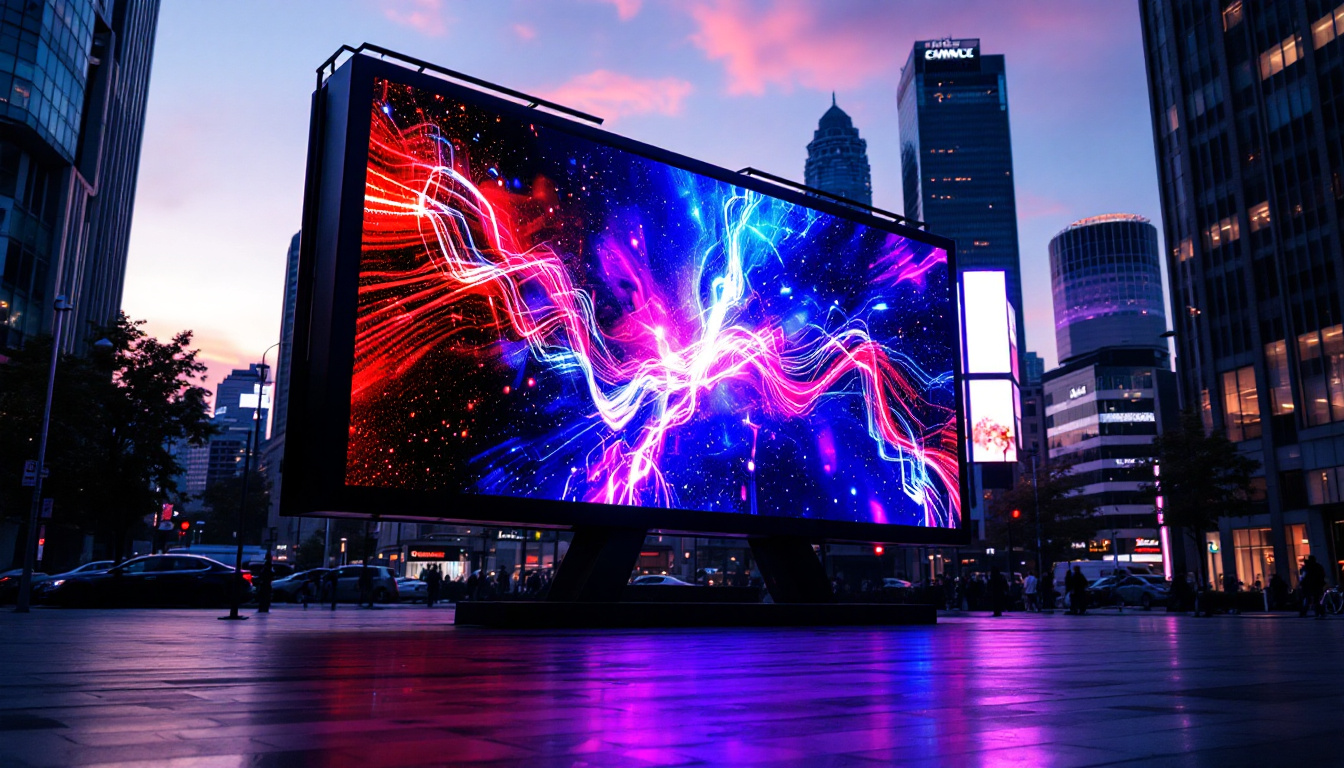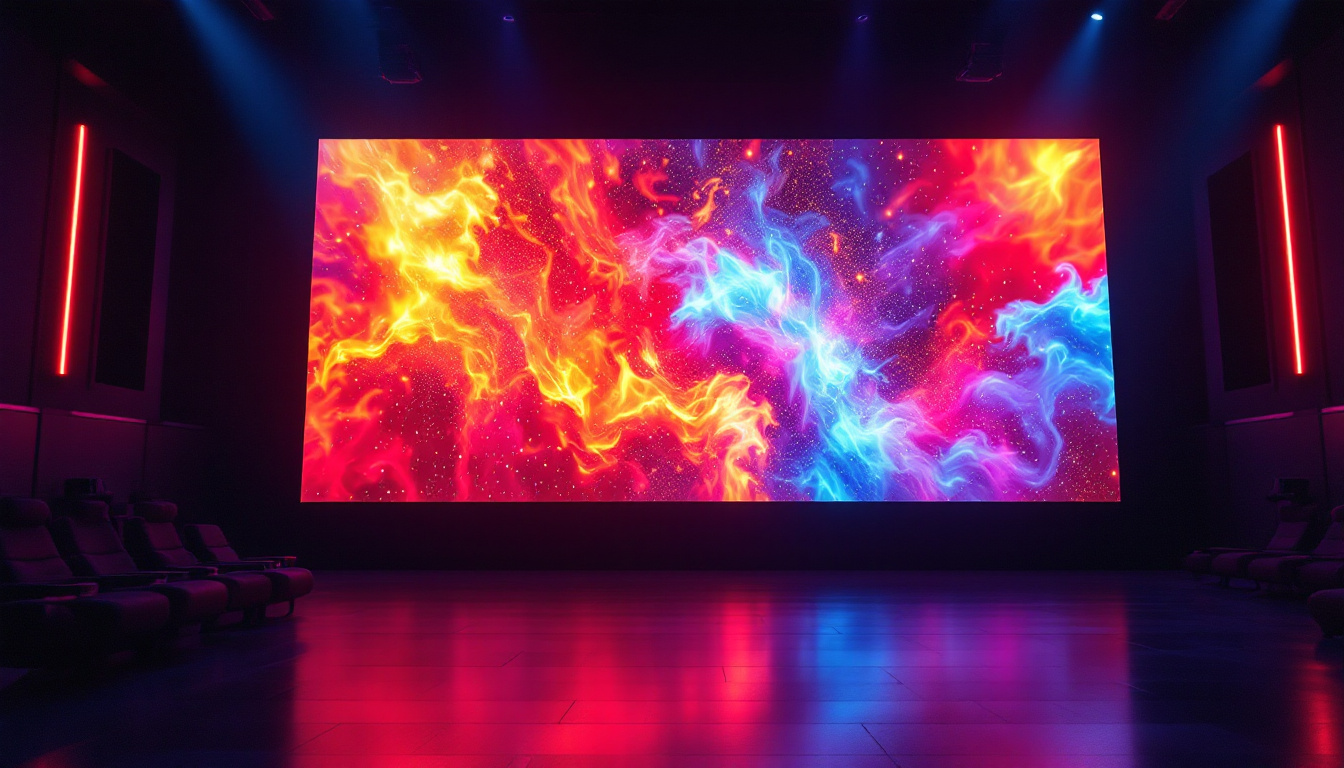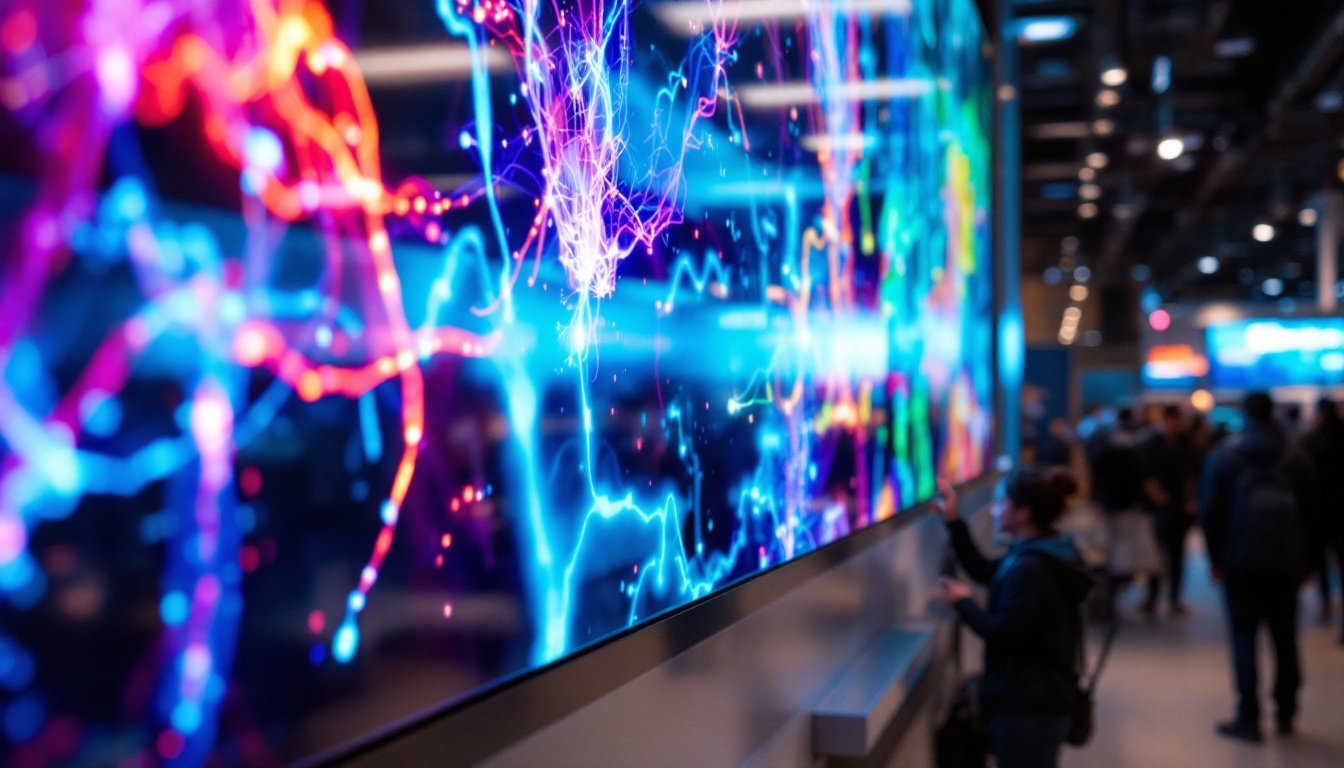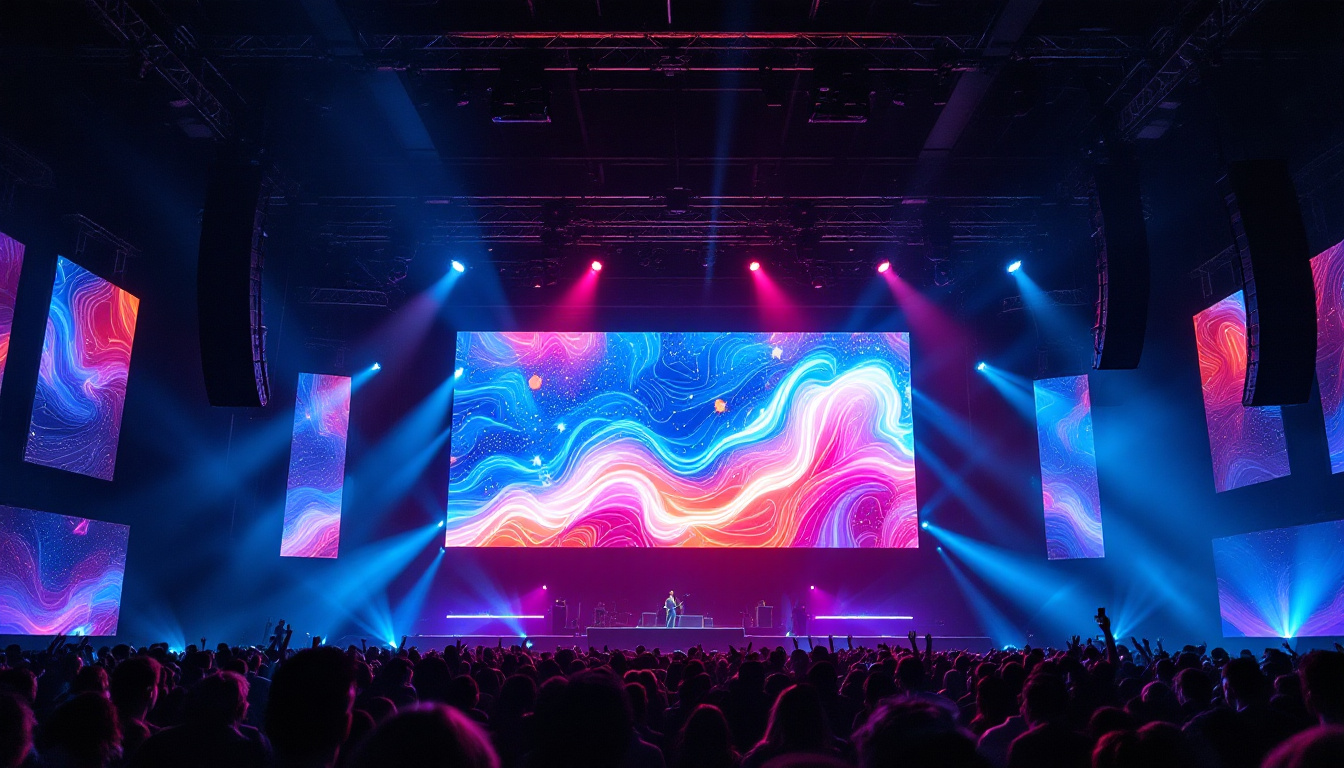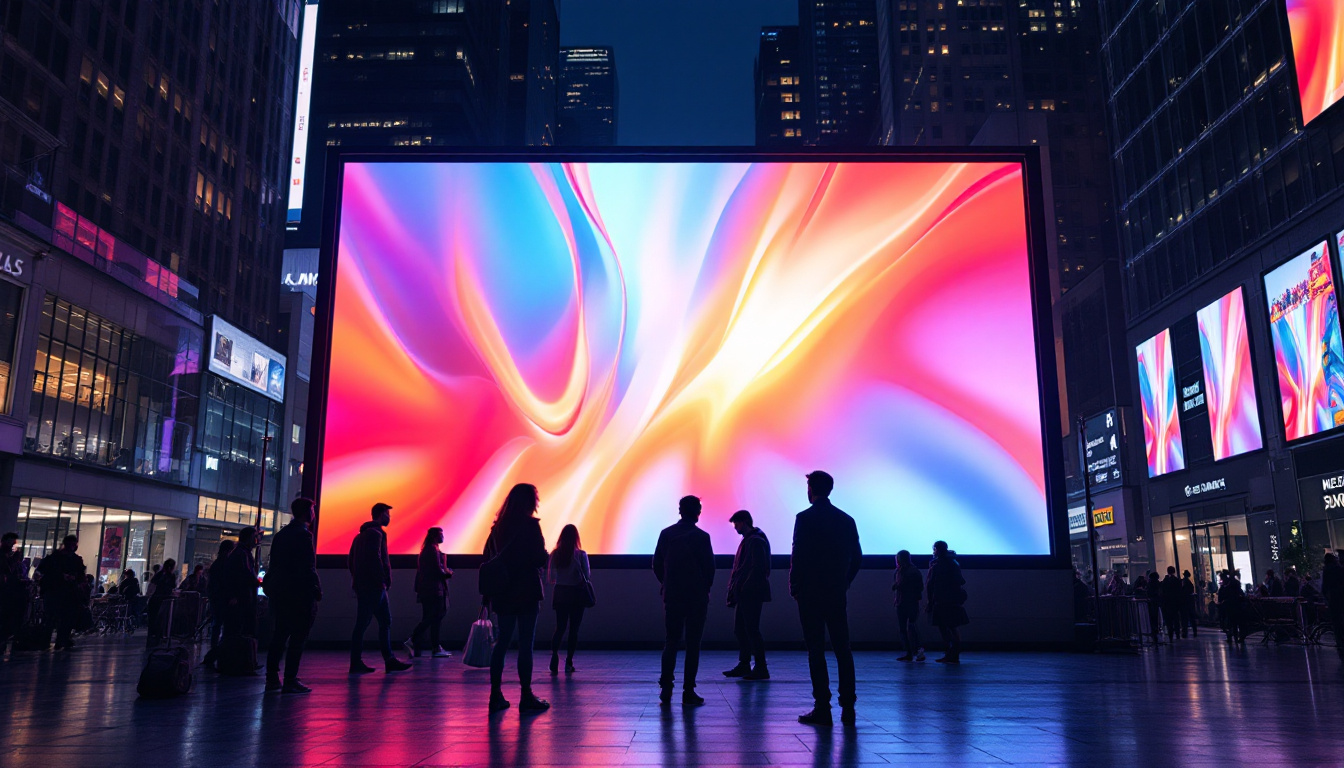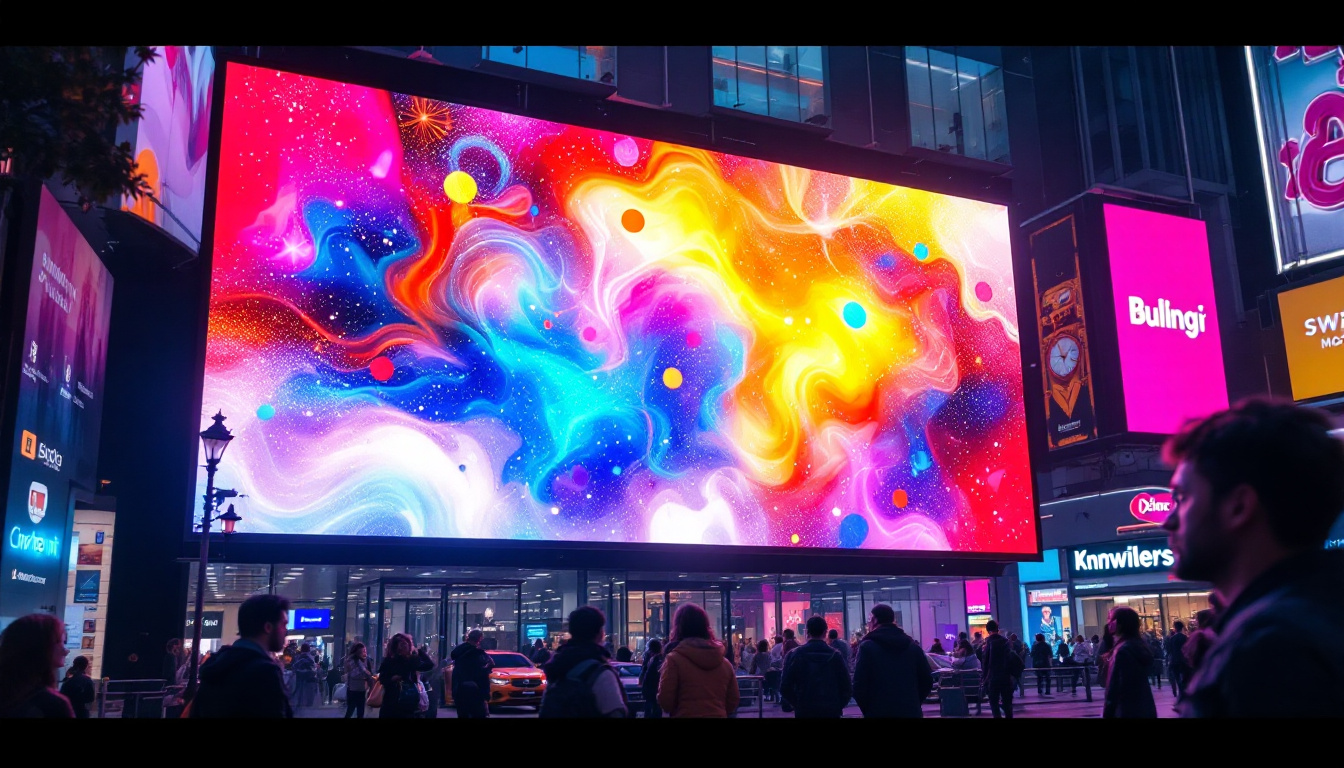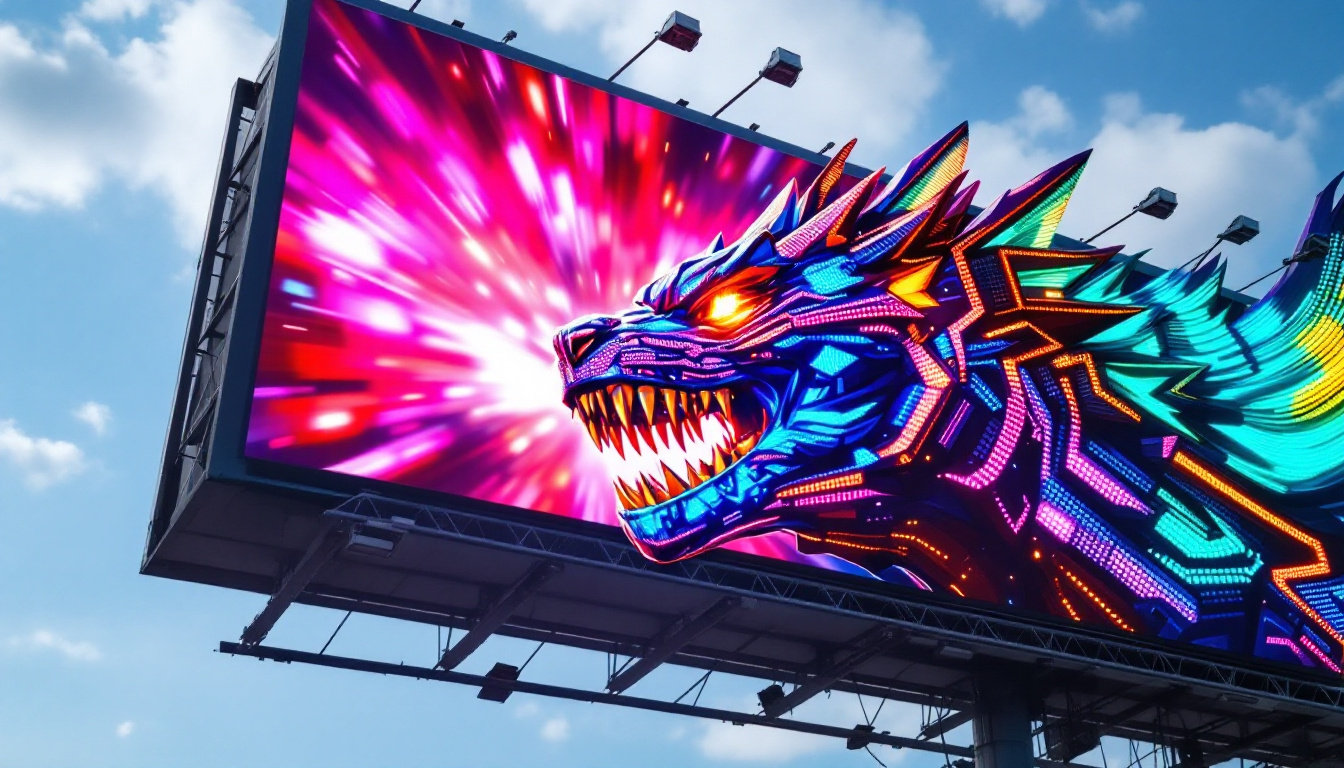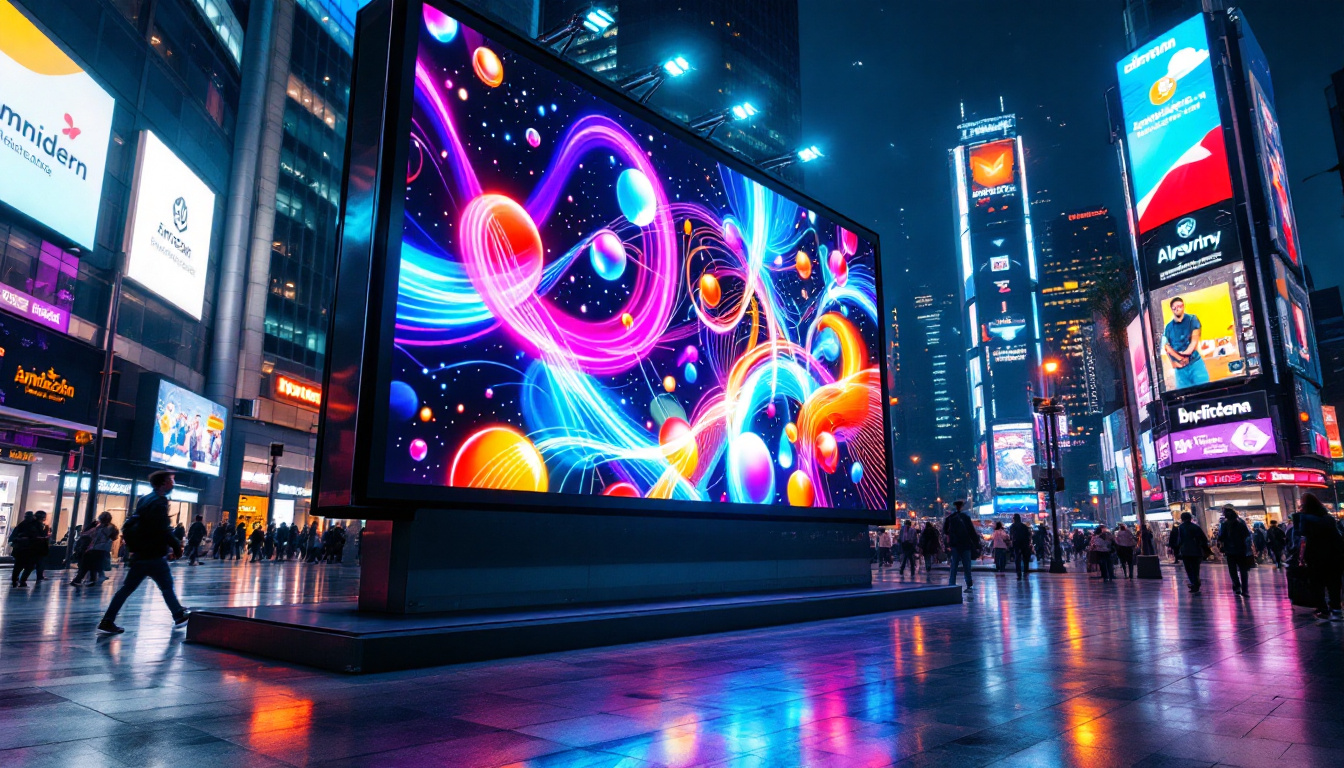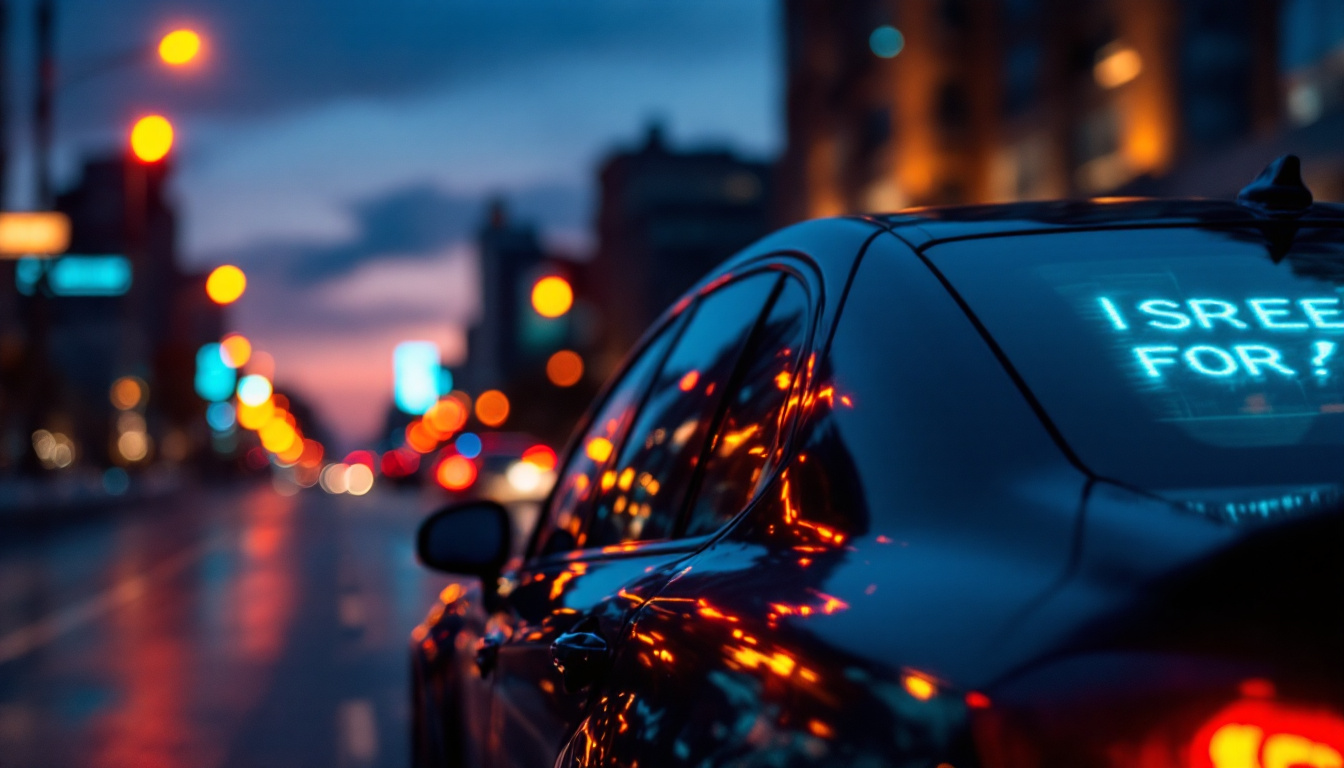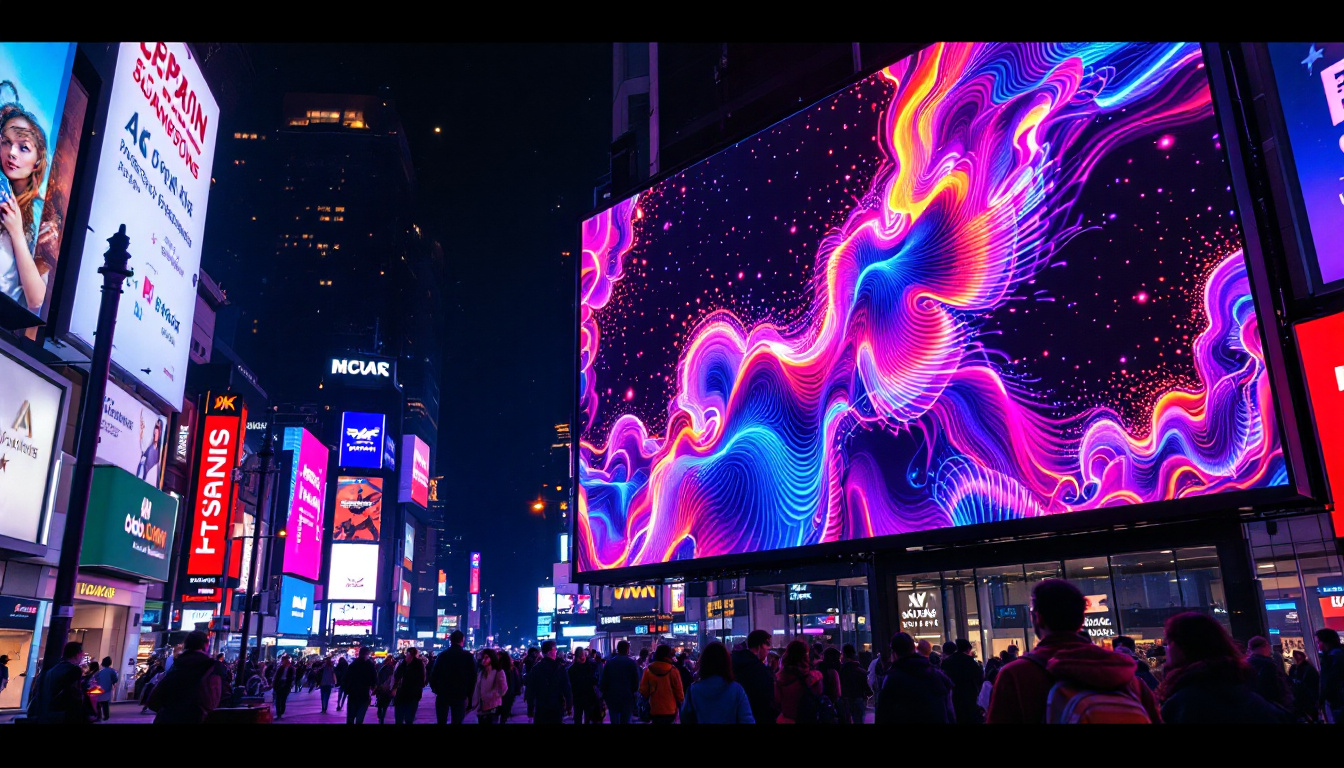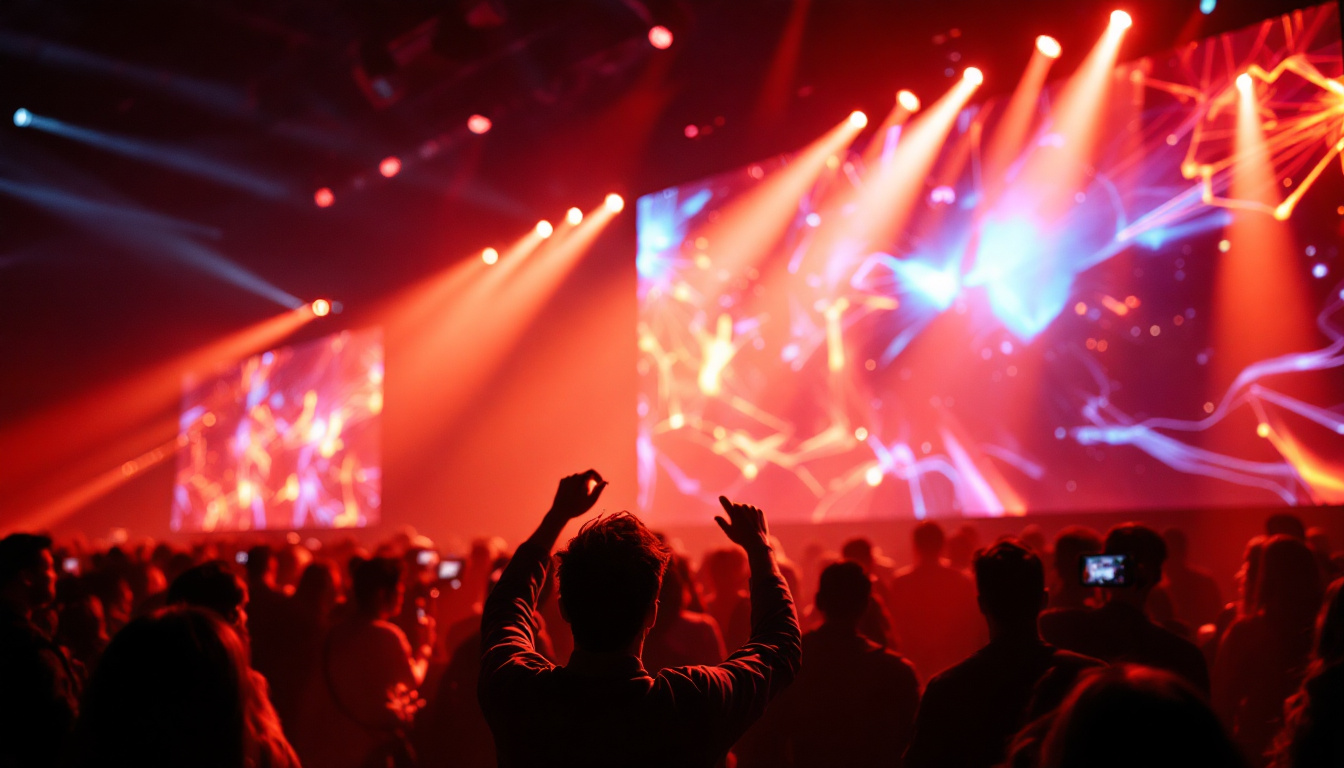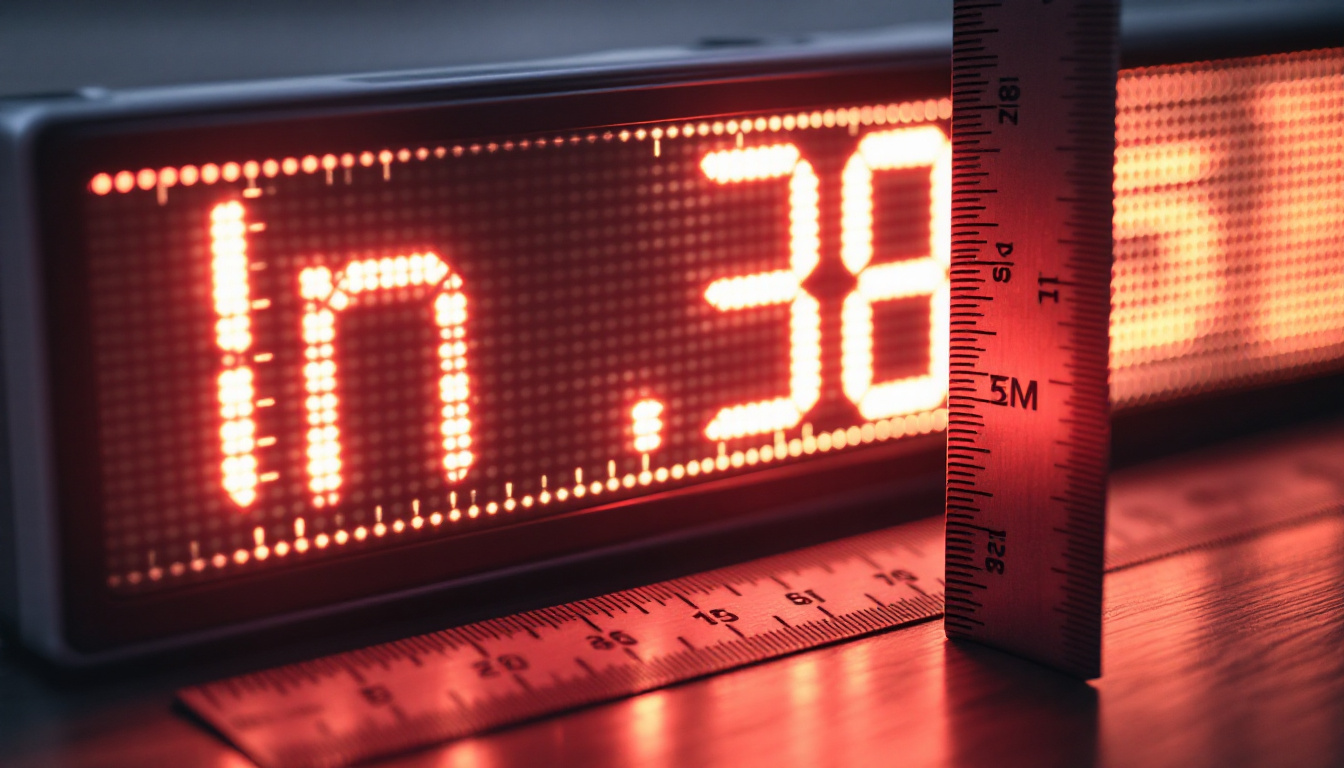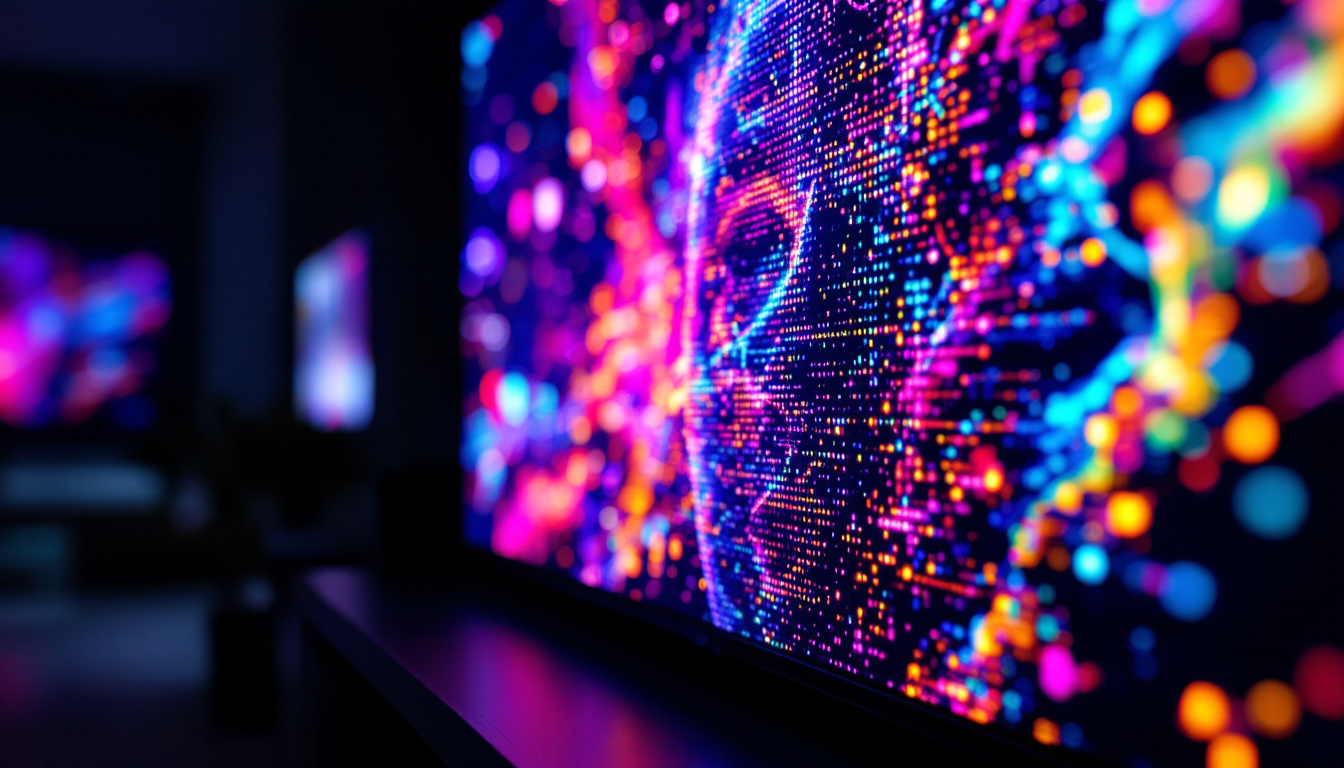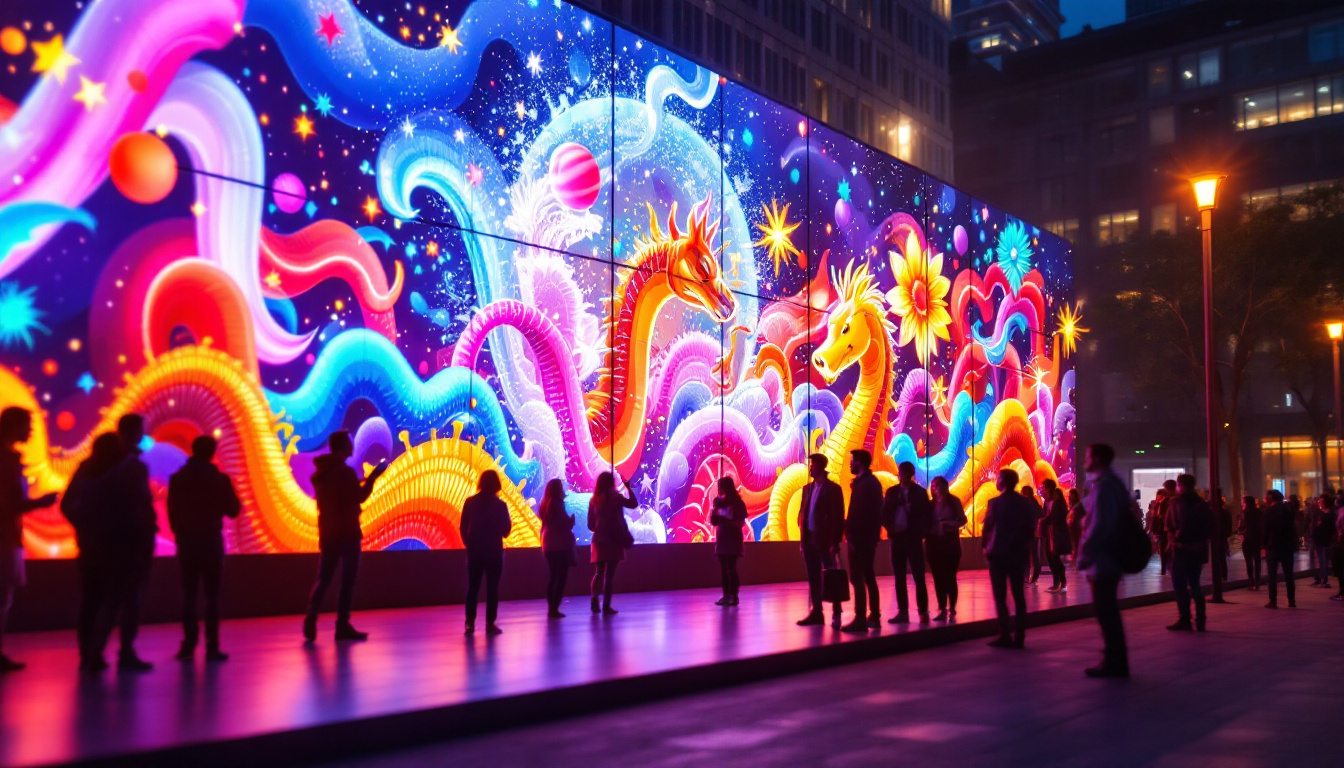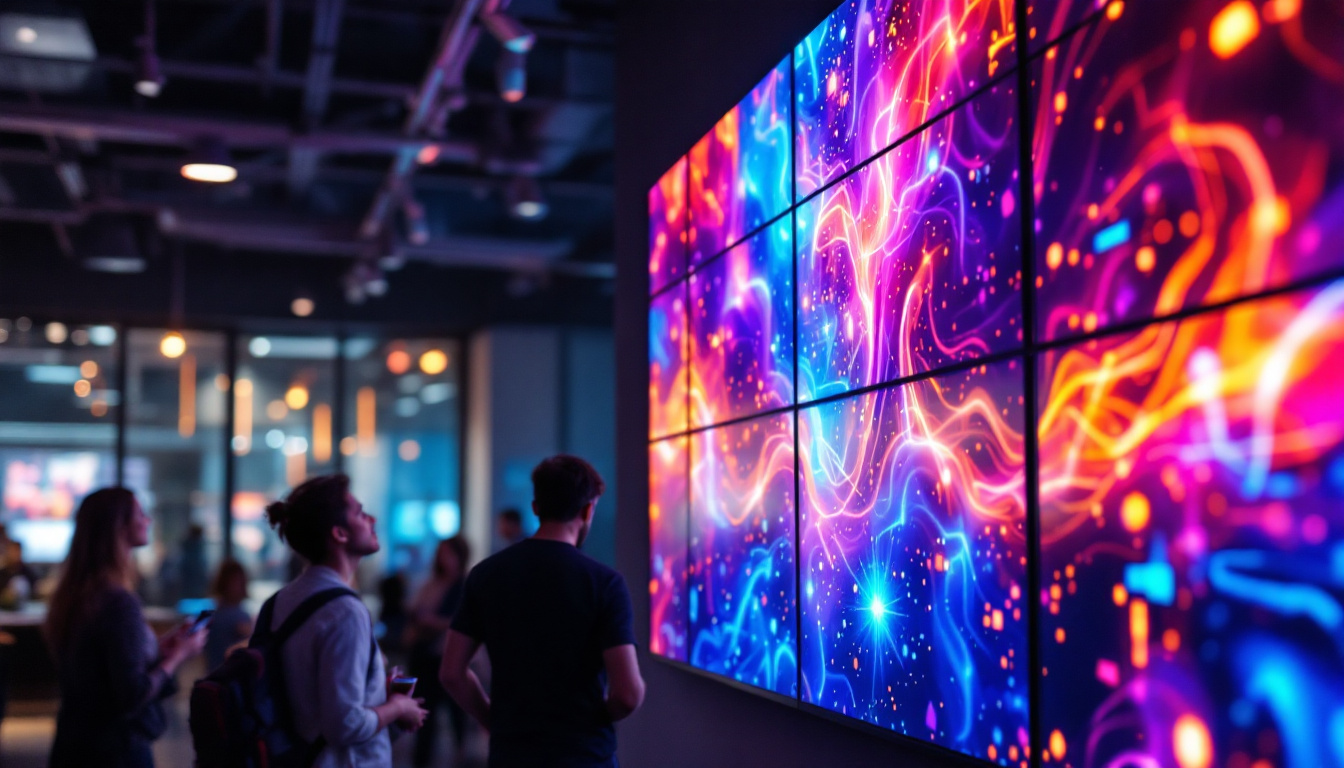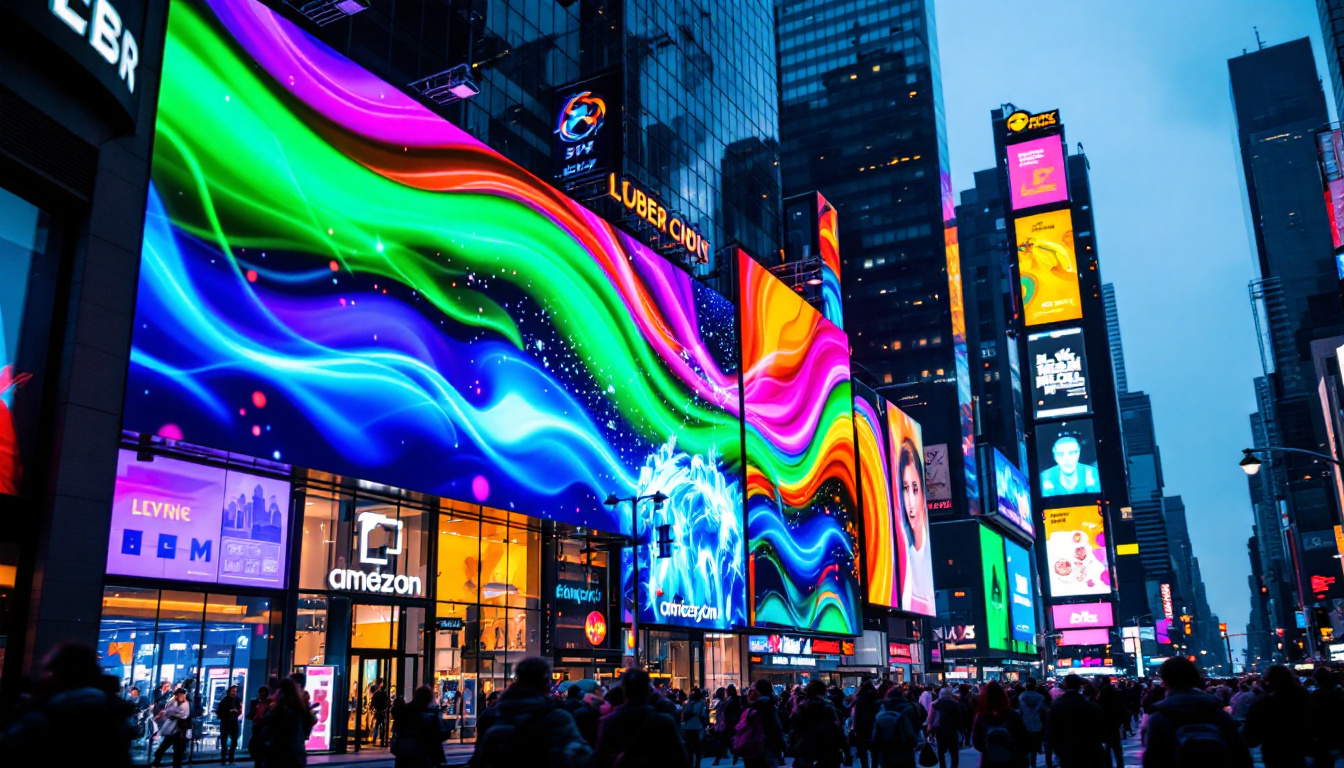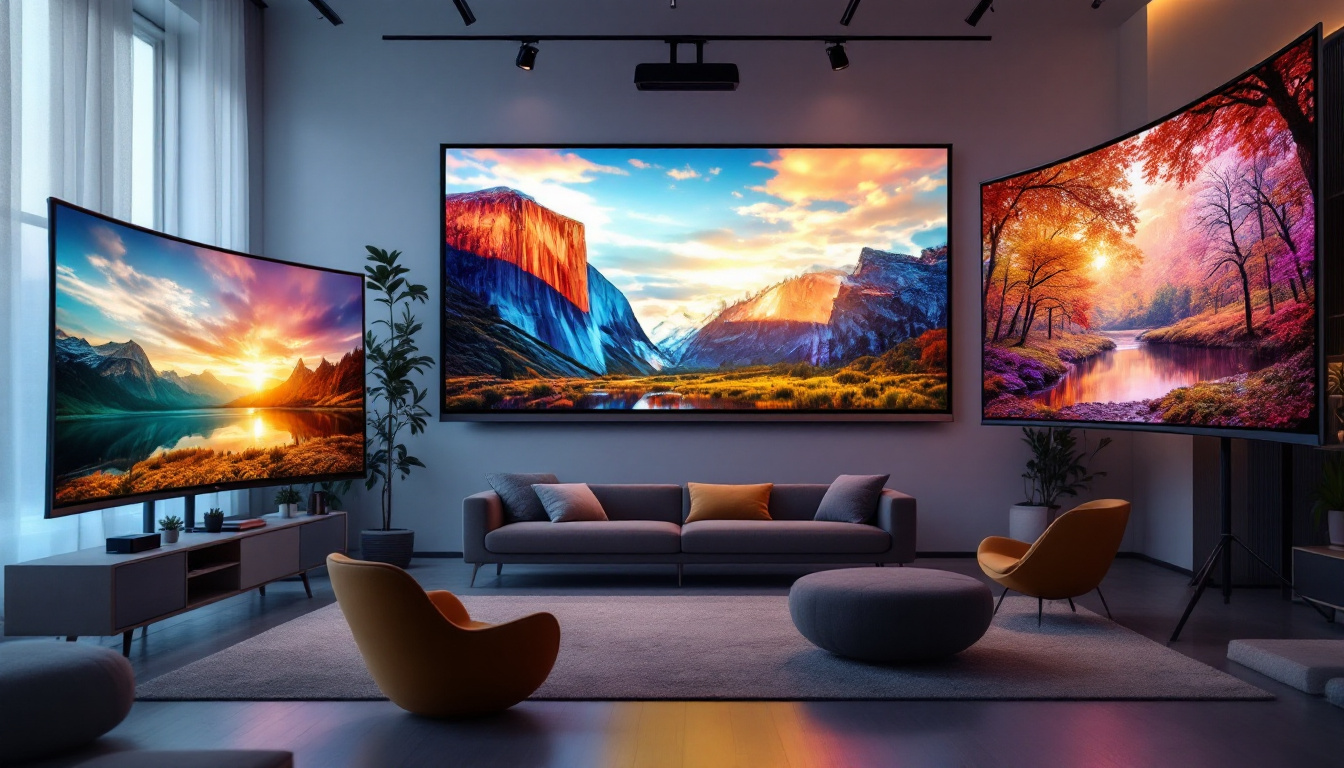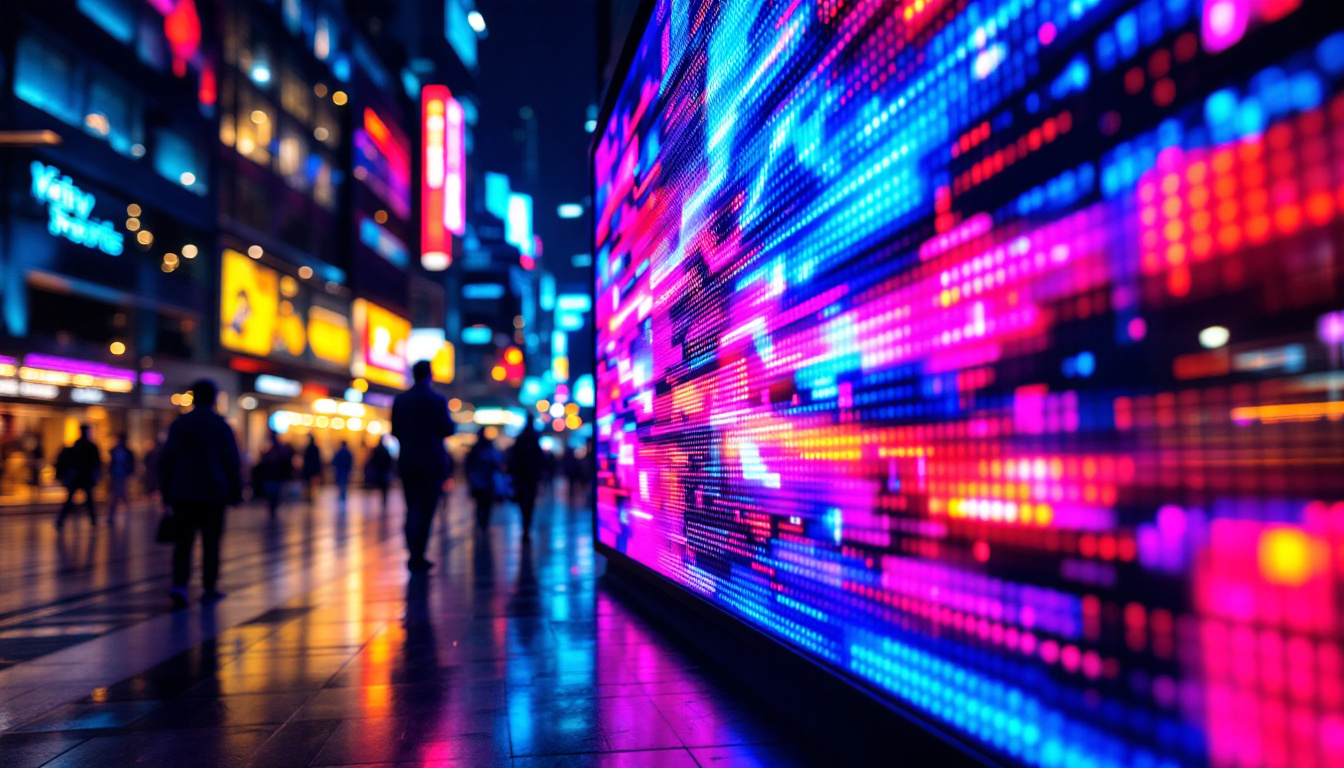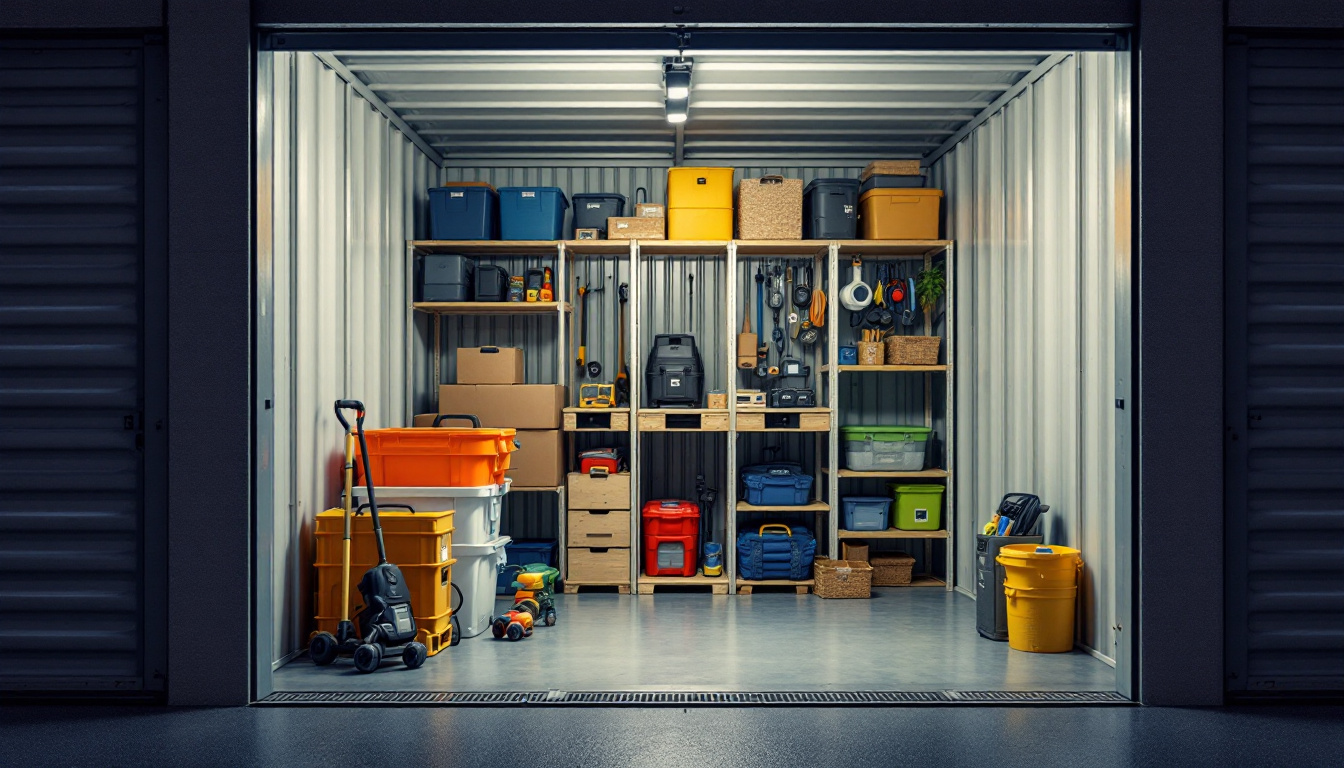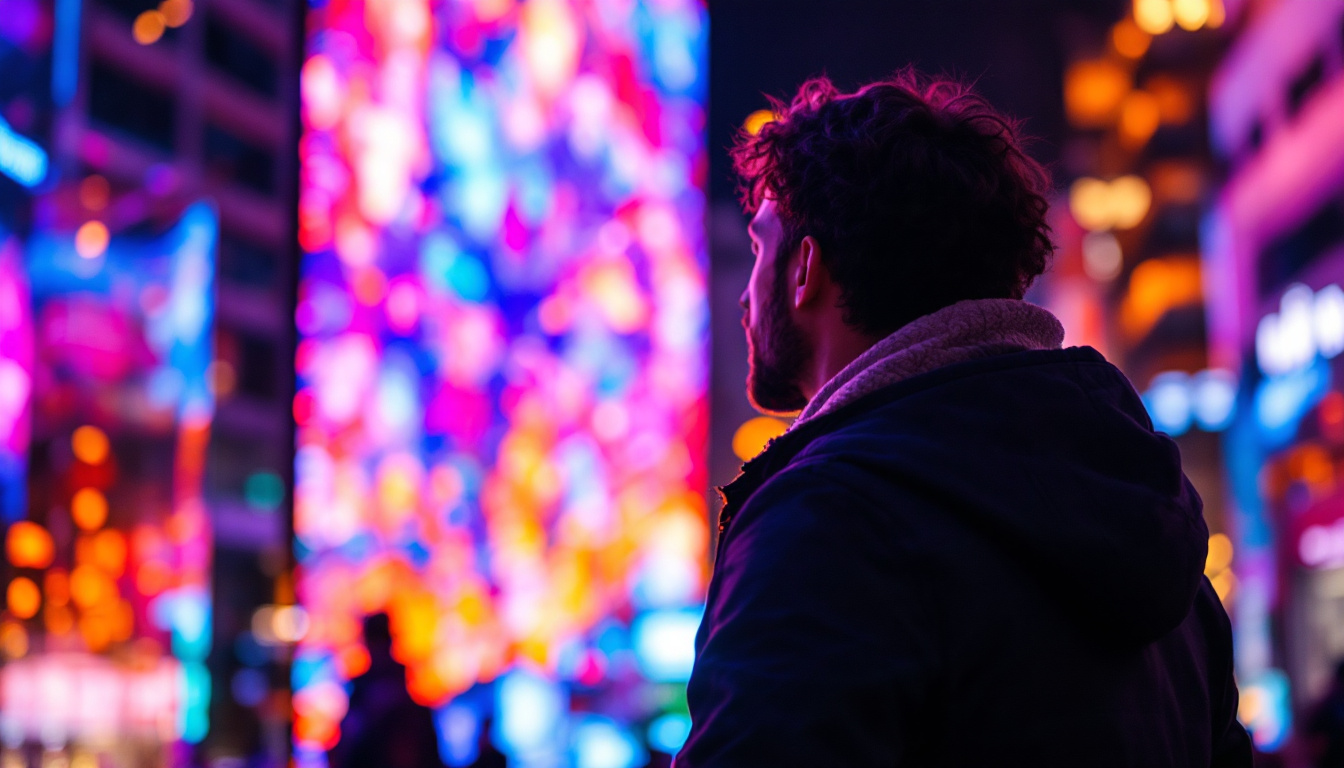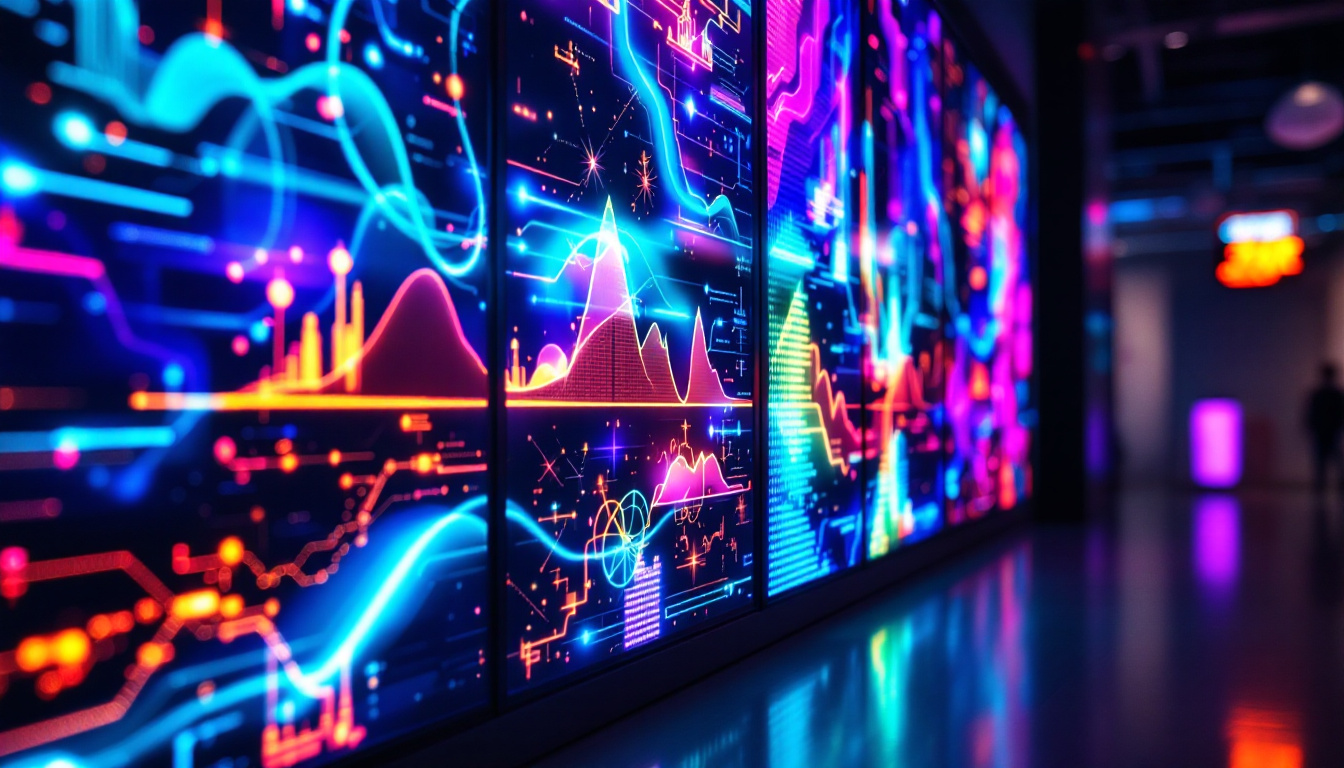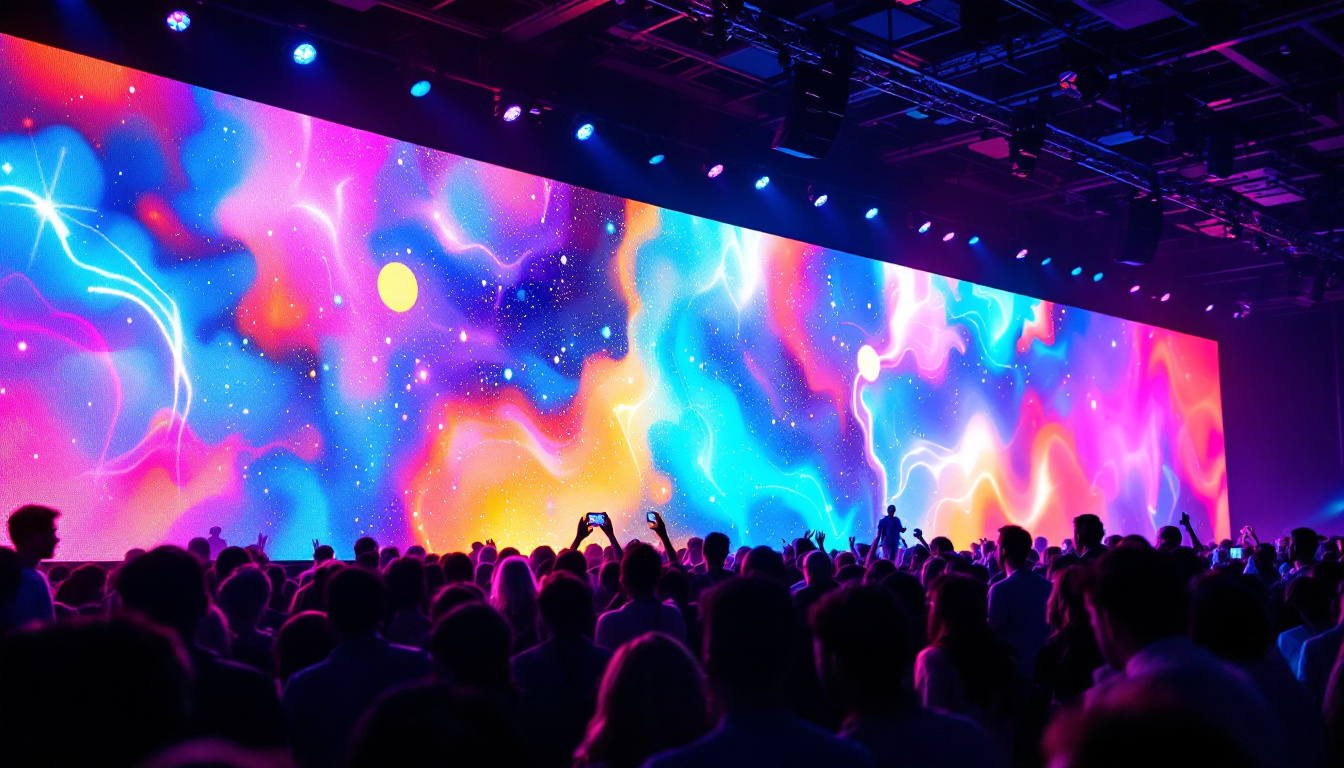In the modern age of entertainment and events, visual displays play a crucial role in engaging audiences. One of the most popular and effective ways to captivate viewers is through LED displays, particularly in festival settings. This article delves into the intricacies of LED technology, its applications in festivals, and the advantages it brings to event organizers and attendees alike.
Understanding LED Technology
Light Emitting Diodes (LEDs) are semiconductor devices that emit light when an electric current passes through them. This technology has evolved significantly over the years, leading to the development of vibrant and energy-efficient displays that are now commonplace in various settings, including concerts, sporting events, and festivals. The transition from traditional incandescent bulbs to LED technology has not only enhanced the visual experience but has also contributed to significant energy savings, making it a sustainable choice for event organizers.
The Basics of LED Displays
LED displays consist of numerous individual light-emitting diodes arranged in a grid pattern. Each diode can emit different colors, allowing for the creation of a full spectrum of visuals. The combination of these diodes enables the display to present images, videos, and animations with remarkable clarity and brightness. The technology behind LEDs allows for rapid response times, which is crucial for dynamic content often seen in live performances, where timing and synchronization are essential for a captivating audience experience.
One of the key characteristics of LED displays is their modular design, which allows for flexibility in size and shape. This adaptability makes them ideal for festivals where stages and viewing areas may vary significantly. Organizers can create customized displays that fit the unique layout of the event, ensuring that every attendee has a great view. Furthermore, the ability to easily assemble and disassemble these displays means that they can be transported and set up quickly, a vital feature for events that require fast turnaround times between performances.
Types of LED Displays
There are several types of LED displays used in festival settings, each with its own unique features. The most common types include:
- Indoor LED Displays: These are typically used in enclosed spaces and offer high resolution for close-up viewing. They are ideal for events such as corporate gatherings or indoor concerts where detail is paramount.
- Outdoor LED Displays: Designed to withstand various weather conditions, outdoor displays are brighter and more durable, making them suitable for open-air festivals. Their enhanced brightness ensures that visuals remain vivid even in direct sunlight, allowing for an engaging experience regardless of the time of day.
- Transparent LED Displays: These innovative displays allow light to pass through, creating a visually striking effect while maintaining visibility behind the screen. This feature is particularly appealing for brands looking to create immersive advertising experiences at festivals, blending digital content with the surrounding environment.
In addition to these types, there are also flexible LED displays that can be bent and shaped to fit unconventional spaces, further pushing the boundaries of creative design. These displays are becoming increasingly popular in artistic installations and immersive environments, where the goal is to captivate audiences through unique visual storytelling. The versatility of LED technology continues to inspire new applications, making it a cornerstone of modern event production.
The Role of LED Displays in Festivals
LED displays have become an integral part of the festival experience, serving multiple purposes that enhance both the atmosphere and the overall enjoyment of attendees. From visual storytelling to advertising, these screens can transform any event into a memorable experience.
Enhancing the Audience Experience
One of the primary functions of LED displays at festivals is to enhance the audience experience. By showcasing live performances, visuals, and animations, these screens create an immersive environment that captivates attendees. The vibrant colors and high resolution draw people in, making them feel more connected to the event.
Moreover, LED displays can be used to convey important information, such as schedules, artist lineups, and safety announcements. This real-time communication keeps attendees informed and engaged, contributing to a smoother festival experience. The screens can also feature interactive elements, such as social media feeds where attendees can share their experiences in real-time, creating a sense of community and shared excitement. This interactivity not only boosts engagement but also encourages attendees to participate more actively in the festival atmosphere.
Advertising and Sponsorship Opportunities
For event organizers, LED displays offer lucrative advertising and sponsorship opportunities. Brands can showcase their products or services on large screens, reaching a wide audience in a dynamic way. This not only generates revenue for the festival but also provides sponsors with valuable exposure.
Furthermore, the ability to display targeted advertisements based on the audience demographic can increase engagement and effectiveness. For instance, a music festival may feature ads for local restaurants or merchandise related to the performing artists, creating a more personalized experience for attendees. Additionally, LED displays can be utilized to promote upcoming events or initiatives, fostering a sense of continuity and excitement beyond the current festival. This strategic use of advertising not only enhances the festival’s atmosphere but also builds long-term relationships between brands and festival-goers, ensuring that both parties benefit from the vibrant festival landscape.
Advantages of Using LED Displays
LED displays offer numerous advantages that make them the preferred choice for festivals and large events. Understanding these benefits can help organizers make informed decisions when planning their events.
Energy Efficiency and Sustainability
One of the standout features of LED technology is its energy efficiency. LED displays consume significantly less power compared to traditional display technologies, such as LCD or projection systems. This not only reduces operational costs for event organizers but also minimizes the environmental impact of the festival.
As sustainability becomes a priority for many festivals, utilizing energy-efficient technology like LED displays aligns with eco-friendly initiatives. Many organizers are now seeking ways to reduce their carbon footprint, and LED displays contribute to this goal by lowering energy consumption.
Durability and Longevity
LED displays are built to last, making them a wise investment for festival organizers. These displays are designed to withstand outdoor conditions, including rain, wind, and extreme temperatures. Their robust construction ensures that they can endure the rigors of multiple events without compromising performance.
Additionally, LED technology has a longer lifespan compared to traditional display options. This longevity means that organizers can use the same equipment for multiple festivals, further enhancing the return on investment.
Challenges and Considerations
While LED displays offer numerous benefits, there are also challenges and considerations that event organizers must keep in mind. Addressing these factors can help ensure a successful implementation of LED technology at festivals.
Cost Implications
Although LED displays are becoming more affordable, the initial investment can still be significant. Event organizers must weigh the costs against the potential benefits, considering factors such as rental fees, installation, and maintenance. For smaller festivals, budgeting for LED displays may require careful planning and allocation of resources.
However, it is essential to view this investment as a long-term asset. The revenue generated from advertising and sponsorships, coupled with the enhanced attendee experience, can offset the initial costs over time.
Technical Expertise and Setup
Setting up LED displays requires technical expertise, particularly when it comes to installation and operation. Organizers may need to hire specialized technicians to ensure that the displays are correctly installed and functioning optimally throughout the event.
Additionally, ongoing maintenance is crucial to address any technical issues that may arise during the festival. Having a dedicated team on-site can help mitigate potential disruptions and ensure a seamless experience for attendees.
Future Trends in LED Displays
The world of LED technology is continuously evolving, and several trends are shaping the future of LED displays in festival settings. Keeping an eye on these developments can help organizers stay ahead of the curve and enhance their events.
Advancements in Resolution and Brightness
As technology progresses, LED displays are becoming increasingly high-resolution and brighter. This advancement allows for even more detailed visuals, enhancing the overall viewing experience for festival-goers. Future displays may feature pixel pitches that are so fine that they can be viewed up close without any loss of quality.
This trend toward higher resolution also opens up new possibilities for creative content. Artists and designers can experiment with intricate visuals that captivate audiences, pushing the boundaries of what can be achieved with LED technology.
Integration with Augmented and Virtual Reality
Another exciting trend is the integration of LED displays with augmented and virtual reality (AR/VR) technologies. This combination can create immersive environments that transport festival-goers into entirely new worlds. Imagine a music festival where attendees can interact with virtual elements projected onto LED screens, enhancing their connection to the performance.
As AR and VR technologies become more accessible, their integration with LED displays will likely become a standard feature at festivals, offering unique experiences that set events apart from the competition.
Conclusion
LED displays have revolutionized the way festivals engage with their audiences. By providing stunning visuals, real-time information, and advertising opportunities, these displays enhance the overall experience for attendees while offering significant benefits to event organizers.
As technology continues to advance, the future of LED displays in festival settings looks promising. With improvements in resolution, brightness, and the integration of immersive technologies, festivals can create unforgettable experiences that resonate with audiences long after the event has ended.
Incorporating LED displays into festival planning is no longer just an option; it has become a necessity for those looking to elevate their events and leave a lasting impression on attendees. By embracing this technology, organizers can ensure that their festivals remain vibrant, engaging, and relevant in an ever-evolving entertainment landscape.
Illuminate Your Festival with LumenMatrix
Ready to transform your next festival into a visually stunning masterpiece? Discover LumenMatrix’s innovative LED display solutions, designed to captivate your audience and amplify your message. From vibrant Indoor LED Walls to dynamic Outdoor Displays and beyond, LumenMatrix offers a full spectrum of cutting-edge options tailored to your unique event needs. Elevate your festival experience and leave a lasting impression with our advanced LED technology. Check out LumenMatrix LED Display Solutions today and light up your event with unparalleled clarity and impact.

